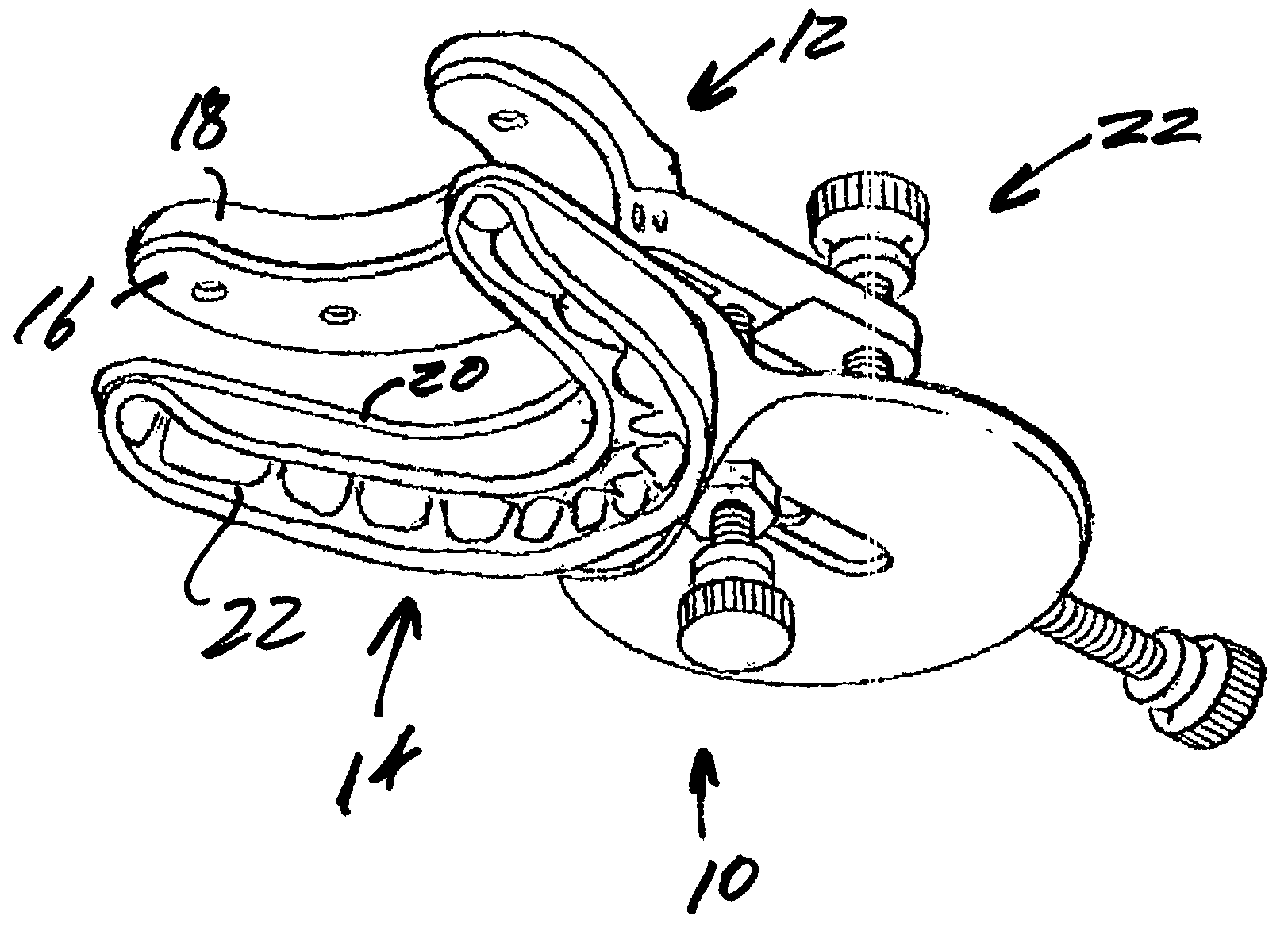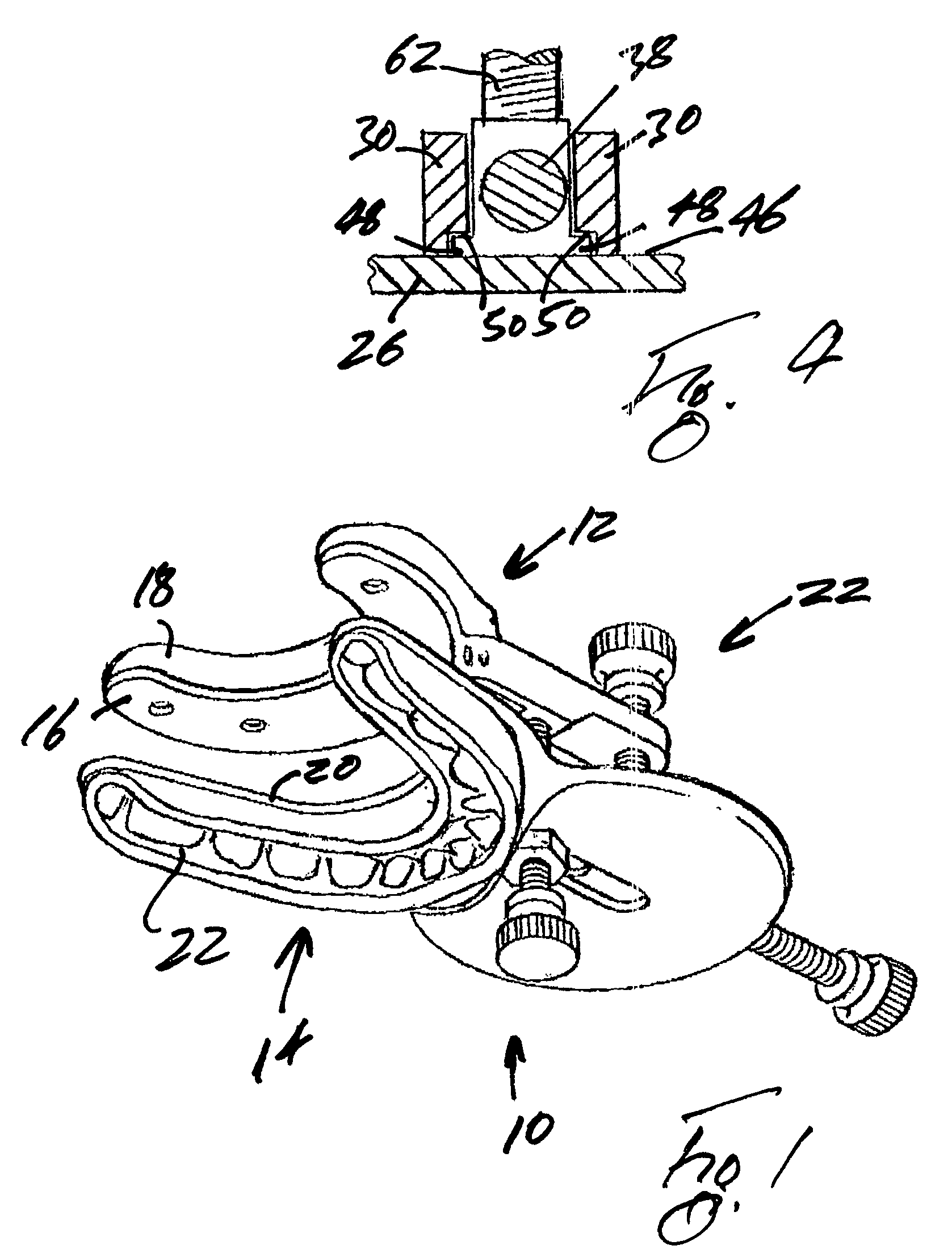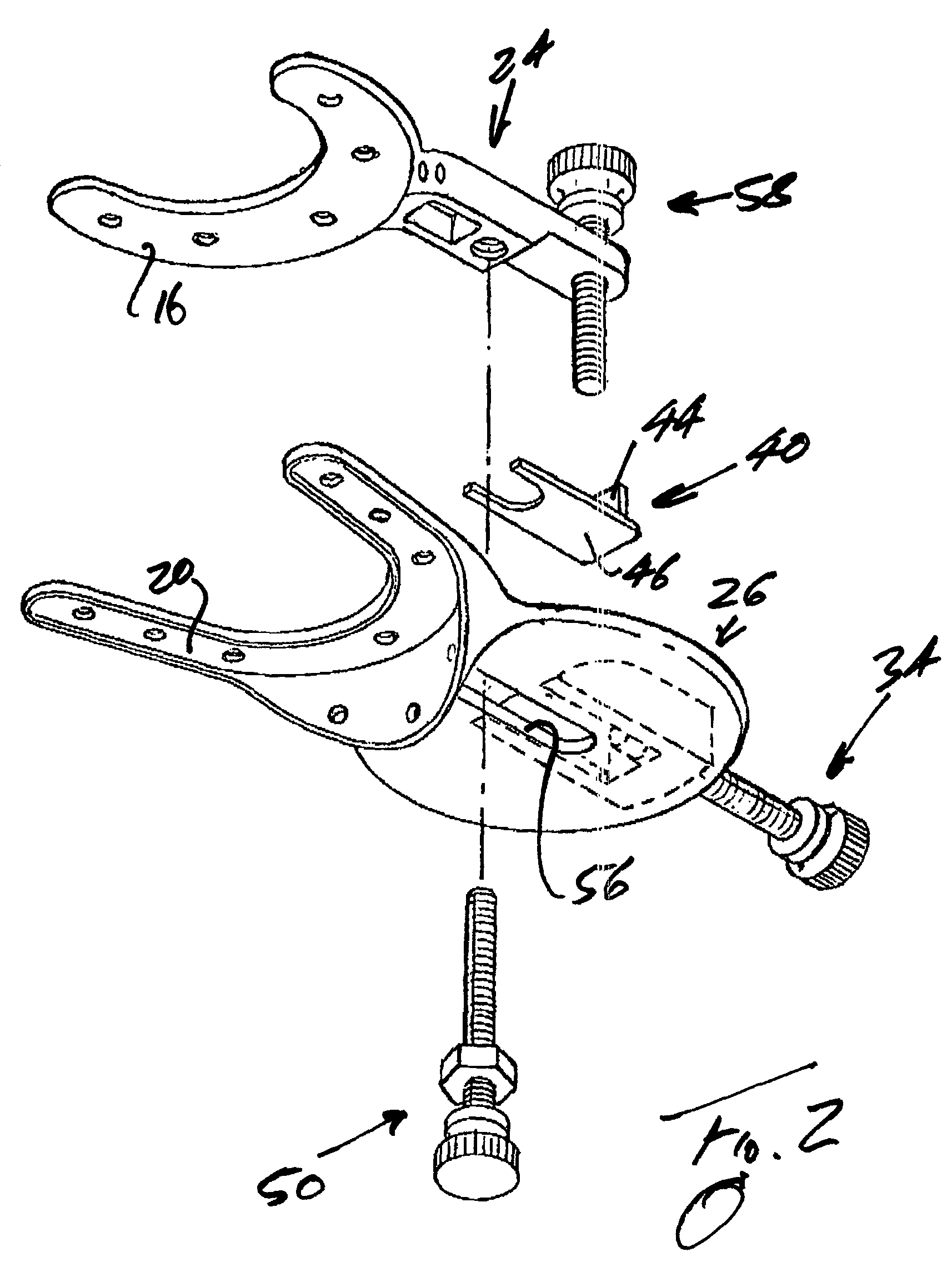Mandible positioning devices
a technology for mandibles and devices, applied in non-surgical orthopedic devices, medical science, dentistry, etc., can solve the problems of not being accessible, not allowing the spacing between upper and lower bite blocks to be adjusted, and awakening patients by the consequent lack of oxygen and blood
- Summary
- Abstract
- Description
- Claims
- Application Information
AI Technical Summary
Benefits of technology
Problems solved by technology
Method used
Image
Examples
Embodiment Construction
[0023]The mandible positioning device shown in FIG. 1 is indicated generally by reference numeral 10 and comprises a maxillary dentition engagement component or upper bite block indicated generally by reference numeral 12 and a mandibular dentition engagement component or lower bite block indicated generally by reference numeral 14.
[0024]More particularly, the upper bite block 12 comprises a flat U-shaped plate or tray 16 with a dental molding 18, shaped to interfit with the maxillary dentition of a patient, and the lower bite block comprises a U-shaped inverted tray 20 carrying, at its underside, a dental molding 22 shaped for interengagement with the mandibular dentition of the patient.
[0025]The upper and lower bite blocks 12 and 14 are interconnected by a manually adjustable connection indicated generally by reference numeral 22, which projects forwardly from the upper and lower bite blocks 12 and 14 so as to protrude beyond the mouth and lips of a patient (not shown). The manual...
PUM
 Login to View More
Login to View More Abstract
Description
Claims
Application Information
 Login to View More
Login to View More - R&D
- Intellectual Property
- Life Sciences
- Materials
- Tech Scout
- Unparalleled Data Quality
- Higher Quality Content
- 60% Fewer Hallucinations
Browse by: Latest US Patents, China's latest patents, Technical Efficacy Thesaurus, Application Domain, Technology Topic, Popular Technical Reports.
© 2025 PatSnap. All rights reserved.Legal|Privacy policy|Modern Slavery Act Transparency Statement|Sitemap|About US| Contact US: help@patsnap.com



